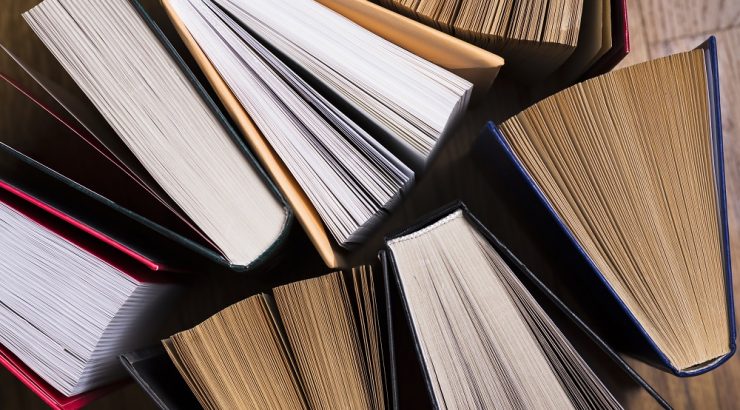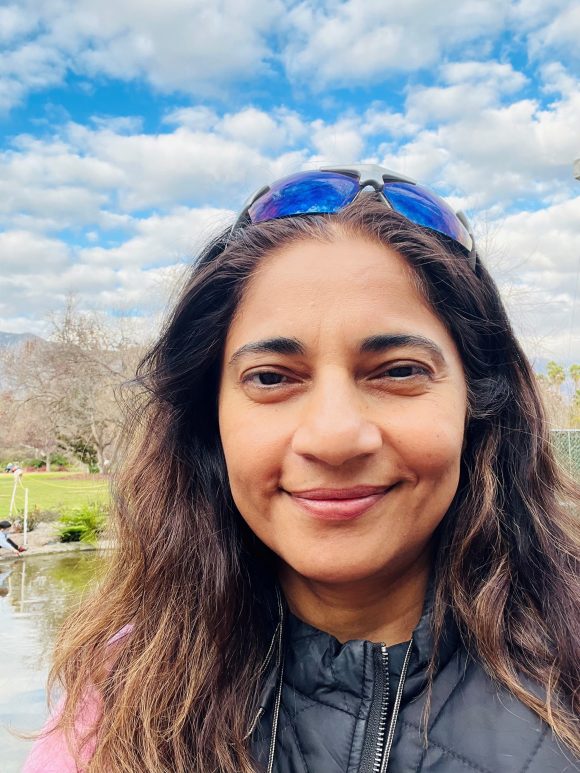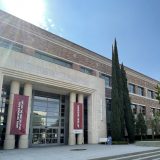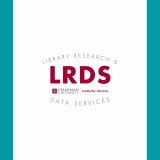
Librarian Interviews: Shalini Ramachandran Meet our First-Ever STEM Librarian
April 11, 2022
At the Leatherby Libraries, we have an interview series highlighting our amazing librarians’ work every day. These interviews help inform the community about all of the different areas of the library and the services we have!
Shalini Ramachandran, our new STEM Librarian, answered some questions for us.
 1. What is your name and title?
1. What is your name and title?
My name is Shalini Ramachandran, and I am the STEM Librarian at Chapman University.
2. In what department of the Leatherby Libraries do you work?
I work in the Research and Instructional Services division of the library.
3. How long have you been at Chapman University?
I started my job on January 13th, before the spring semester began. I’m brand new to Chapman. It was very quiet on campus the first two weeks I was here. It’s wonderful to see a campus full of students back for the semester.
4. What is your job in a nutshell, and what do you think your contributions will be?
I provide research support and information literacy instruction to the Dale E. and Sarah Ann Fowler School of Engineering. I am also the library liaison to the Department of Chemistry and the Grand Challenges Initiative (GCI).
Additionally, I am part of the committee working to expand and provide Leatherby Libraries research and data services.
I’m looking forward to forging partnerships with the science and engineering faculty and students. My role is to assist them with the research and education journey.
5. Have you held any jobs at other universities or libraries?
Before I became a librarian, I taught English literature and writing. I taught at San Diego State and the University of California, San Diego. I was an academic librarian at Boise State University and the University of Southern California.
6. What are your passions/interests outside of work?
I enjoy running and traveling. I always look for opportunities to combine both. Additionally, I like cooking and trying recipes from different cuisines. I love reading, both fiction and non-fiction.
7. Where did you get your degree?
I recieved my Ph.D. in English at Purdue University, my M.S. in Library and Information Studies at the University of Wisconsin-Madison, and my B.A. in Mathematics at the University of Mumbai.
8. Where is your hometown?
I grew up in Mumbai, India, a large city on the west coast of India. I’ve now lived in the United States longer than in India but growing up in Mumbai was certainly a formative experience for me.
When I first came to the United States, I lived in the Midwest and then moved to Southern California. Although Southern California is quite different from where I grew up, Los Angeles (where I live) has felt familiar because of its diversity, density, oceanfront, and being a movie-industry town like Mumbai. It feels like a second hometown.
9. What is the last book you read or the last book you loved?
I recently read a short book, How to Save the Planet, by Mark Maslin, a professor of Earth System Science at University College, London. I’m interested in solutions to the climate crisis and how the solutions are communicated in the public realm. This book had a straightforward, simple-to-read approach to climate science. Often, with climate change conversations, it is easy to feel pessimistic and ineffective. Maslin has an optimistic outlook and puts forward clear steps people can take to prevent further warming of the planet. After reading the book, I felt encouraged that a change of course is possible from what would otherwise be an extinction event.
10. How do you define STEM librarianship as a concept/new trend in Librarianship?
I don’t think of STEM librarianship as a new concept, per se. Librarians have worked in science and engineering disciplines for a long time. The term STEM Librarian may be a re-branding or, possibly, a recognition that these subject areas have a specialized set of research needs and require support from librarians who have the expertise to address those needs. In terms of trends, information resources in STEM fields are almost fully digital now.
There is an increasing discussion about democratizing access to scientific knowledge. This could happen through open access publishing and open data.
The Covid-19 pandemic showed us how critical it was to have a rapid pathway from research to dissemination to other researchers and the general public.
I think the expansion of open access will continue to be a trend in STEM Librarianship.
My goal is to support students and faculty with data literacy: understanding, finding, and analyzing data generated in research is another key area of growth in the field.
11. Any other interests you would like to talk about?
I am very interested in how bias enters information systems, search engines, and automated decision-making programs and causes harm to individuals and groups. I was introduced to the term algorithm bias after I heard a talk by Professor Safiya Noble a few years ago. She wrote a book called Algorithms of Oppression on how the Google search engine and sites such as Yelp can be negatively biased towards communities of color. After I read about the subject, I began a study with another librarian and a computer science professor on how to teach algorithm bias to computer science students designing future information systems. Developing instruction about algorithm bias is one area of research for me.
Furthermore, I developed other interests like how virtual reality is used in the lab and other STEM instruction and how libraries can foster sustainability.

